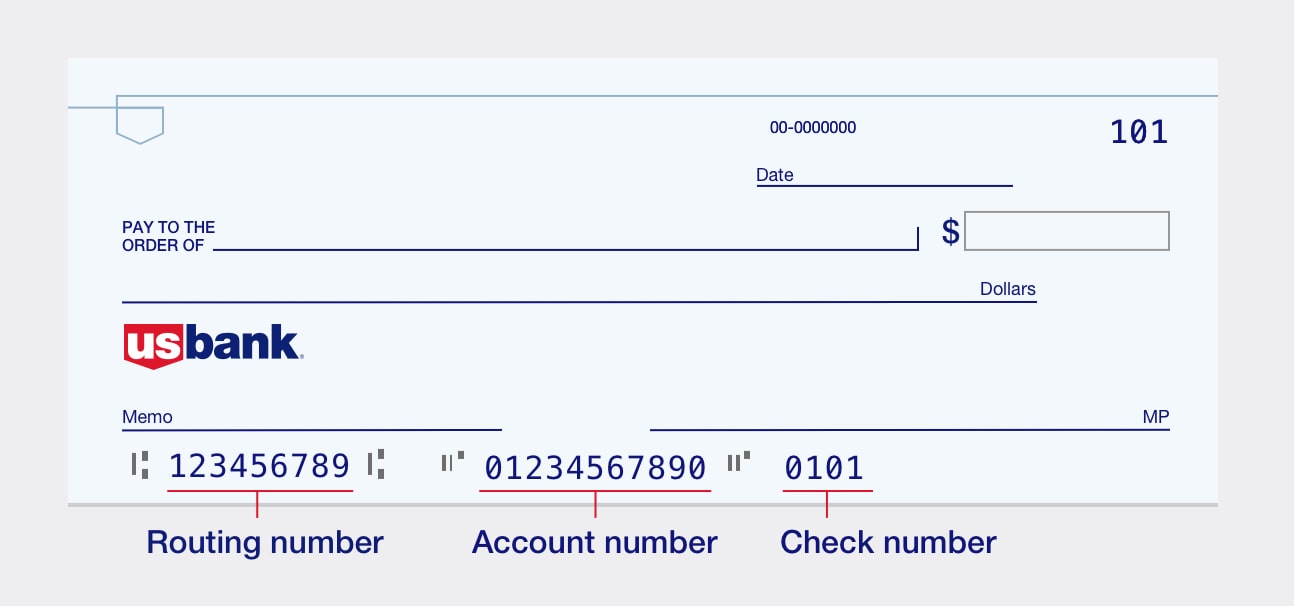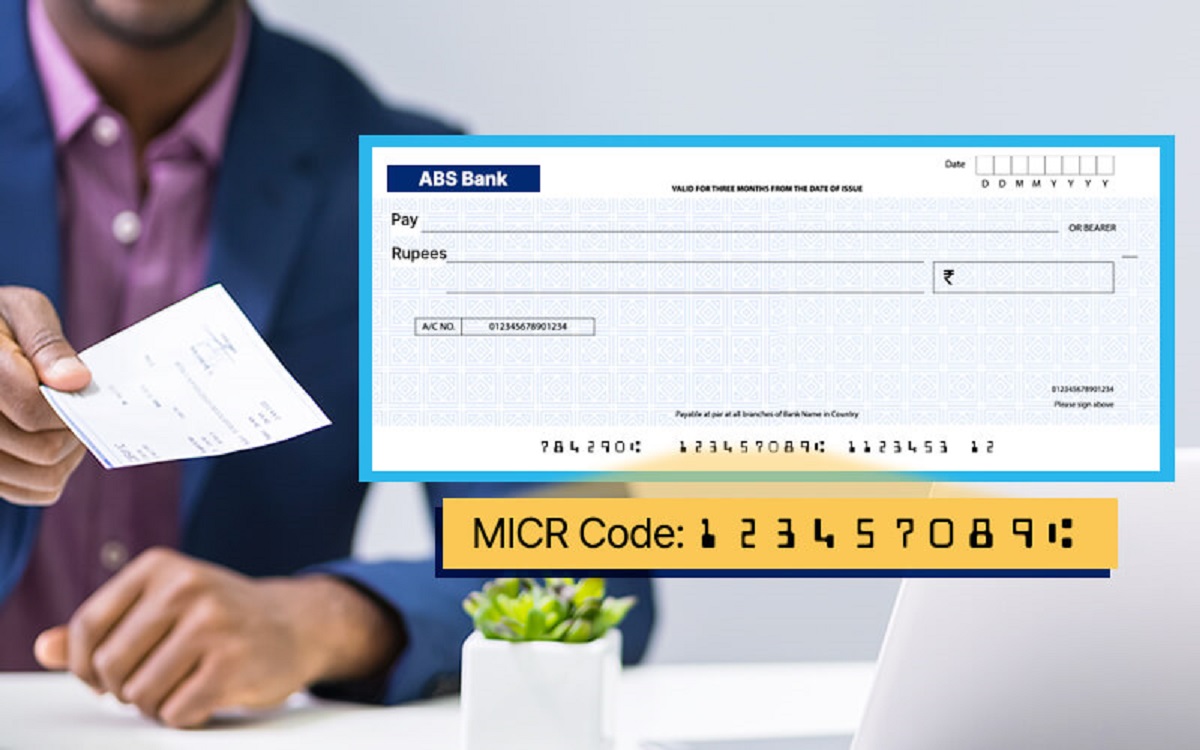What Is a Transit Number?
A transit number, also known as a routing number or an ABA number, is a unique identifier assigned to financial institutions in the United States and Canada. It is a nine-digit code that is used to identify the specific bank or credit union associated with a particular account.
The transit number plays a crucial role in the smooth functioning of banking transactions. It helps ensure that funds are accurately and securely transferred between accounts within the same financial institution or across different institutions.
Each transit number is unique to a specific bank or credit union and reflects their geographical location. The first four digits of the transit number typically represent the Federal Reserve routing symbol, followed by the institution’s identification number.
Financial institutions require customers to provide their transit number along with their account number when conducting various banking activities, such as setting up automatic bill payments, initiating wire transfers, or depositing funds via direct deposit.
It is important to note that transit numbers may vary depending on the type of account. For instance, different transit numbers may be assigned to checking accounts, savings accounts, or business accounts within the same financial institution.
The main purpose of a transit number is to streamline and facilitate the transfer of funds. When making a transaction, the transit number ensures that money is directed to the correct financial institution and account.
Furthermore, transit numbers are essential for verifying the credibility and legitimacy of a financial institution. By using the transit number, individuals and businesses can confirm that they are dealing with authorized banking entities, protecting themselves from potential fraud or scams.
In brief, a transit number is a crucial component of the banking system, enabling seamless and secure fund transfers. Its unique identification allows for accurate routing of transactions and ensures the integrity and credibility of financial institutions.
Purpose of a Transit Number
The purpose of a transit number, also known as a routing number or an ABA number, is to facilitate the smooth and secure transfer of funds between financial institutions. This unique identifier serves several essential functions within the banking system.
Firstly, a transit number ensures that funds are accurately routed to the correct financial institution. When initiating a transaction, such as a bank transfer or automatic bill payment, the transit number is used to identify the destination bank or credit union. This ensures that the funds are directed to the intended recipient and account, reducing the risk of errors or misappropriation.
Additionally, the transit number plays a vital role in distinguishing between different types of accounts within the same financial institution. For example, a bank may have separate transit numbers for checking accounts, savings accounts, or business accounts. This allows for efficient and precise routing of transactions specific to each account type, ensuring that the funds are correctly allocated and reconciled.
Another purpose of a transit number is to verify the credibility and legitimacy of a financial institution. By using the transit number, individuals and businesses can confirm that they are dealing with authorized banking entities. This helps protect against potential fraud or scams by ensuring that transactions are only conducted with valid and authorized organizations.
Moreover, the transit number plays a crucial role in the processing of various financial activities. It is utilized for direct deposits, wire transfers, electronic payments, and other banking operations. These transactions require the accurate input of the transit number to ensure the seamless transfer of funds between accounts, both domestically and internationally.
Financial institutions, including banks and credit unions, rely on transit numbers to streamline their operations and maintain an efficient banking system. These numbers help automate the routing of transactions, reducing manual errors and minimizing processing delays. This results in faster and smoother financial transactions for individuals and businesses alike.
In summary, the purpose of a transit number is to enable accurate routing of funds, differentiate between different types of accounts, verify the legitimacy of financial institutions, and facilitate efficient banking operations. Its functionality ensures the secure and seamless transfer of funds, contributing to the overall stability and reliability of the modern banking system.
How to Locate a Transit Number
Locating a transit number can be a straightforward process, as there are multiple ways to obtain this vital information. Whether you are a new customer or an existing account holder, here are some common methods to help you find the transit number associated with your bank or credit union.
1. Check Your Bank’s Website: Most financial institutions provide comprehensive information on their websites, including their transit numbers. Visit your bank’s official website and navigate to the section that offers information about account services or contact details. Look for a page specifically dedicated to routing numbers, and you should find the relevant transit number(s) displayed there.
2. Check Your Bank Statement: Your bank statement often contains important account information, such as your transit number. Look for a section on the statement that outlines the routing or transit number associated with your account. It is usually displayed near the top of the statement or alongside your account information.
3. Contact Customer Service: If you are unable to find the transit number on your bank’s website or statement, reach out to their customer service department. This can typically be done through a phone call, live chat, or email support. Provide your account details to the customer service representative and request the transit number associated with your account. They should be able to provide you with the necessary information promptly.
4. Use Online Banking: If you have access to your bank’s online banking platform, log in to your account. Most online banking platforms display the transit number associated with your account on the account summary or details page. Navigate through the different sections or settings of your online banking platform to locate the transit number.
5. Visit a Local Branch: If all else fails, you can visit a local branch of your bank or credit union. Speak with a representative or a teller and request the transit number for your account. Be sure to bring appropriate identification and account details to ensure a smooth and efficient process. The branch staff should be able to provide you with the transit number you need.
Remember, transit numbers may vary depending on the type of account you hold. Double-check that you are obtaining the correct transit number for the specific account you are using for a transaction or inquiry.
By utilizing these methods, you should be able to locate the transit number associated with your bank or credit union account. Keep this information handy as it is often required when setting up automatic payments, processing transactions, or conducting other banking activities.
Examples of Transit Numbers
Transit numbers, also known as routing numbers or ABA numbers, can vary depending on the financial institution and location. Here are a few examples of transit numbers for different banks in the United States and Canada:
- Bank of America: The transit number for Bank of America is 026009593.
- JPMorgan Chase: JPMorgan Chase’s transit number is 021000021.
- Wells Fargo: The transit number for Wells Fargo is 121000248.
- Toronto-Dominion Bank (TD Bank): TD Bank’s transit number is 026013673.
- Royal Bank of Canada (RBC): The transit number for RBC is 000308050.
- Scotiabank: Scotiabank’s transit number is 000201532.
These examples demonstrate the unique transit numbers associated with different financial institutions. When conducting transactions or setting up payment transfers, it is important to use the correct transit number for the specific bank or credit union you are dealing with.
It is worth noting that transit numbers may differ for various branches within the same financial institution. This is especially relevant for large banks or credit unions that have multiple branch locations across different regions.
To ensure accuracy and a seamless transaction process, double-check the transit number provided by your financial institution. This can typically be done by visiting their official website, contacting customer service, or referring to your bank statement or online banking platform.
By using the correct transit number, you can confidently initiate transactions, set up automatic payments, and perform other banking activities without any issues or delays.
Importance of Transit Numbers in Banking
Transit numbers, also known as routing numbers or ABA numbers, play a vital role in the banking industry. They serve several important purposes that contribute to the efficiency, security, and integrity of financial transactions. Here are some key reasons why transit numbers are essential in banking:
1. Secure Transfer of Funds: Transit numbers ensure that funds are accurately directed to the correct financial institution and account. By utilizing this unique identifier, banks can ensure that transactions are properly routed, minimizing the risk of errors, and ensuring the secure transfer of funds.
2. Differentiation of Account Types: Transit numbers help distinguish between different types of accounts within the same financial institution. This enables efficient routing of transactions specific to each account type, ensuring that funds are correctly allocated and reconciled.
3. Verification of Financial Institutions: Transit numbers confirm the credibility and legitimacy of financial institutions. By using the assigned transit number, individuals and businesses can ensure that they are dealing with authorized banking entities, protecting themselves from potential fraud or scams.
4. Smooth Processing of Transactions: Financial activities such as direct deposits, wire transfers, and electronic payments require accurate routing information. Transit numbers streamline these processes, reducing manual errors, and ensuring faster and smoother transactions for account holders.
5. International and Domestic Transactions: Transit numbers are essential for both domestic and international transactions. They facilitate the seamless transfer of funds between accounts within the same country as well as across borders, ensuring that the funds reach the correct destination without any delays or complications.
6. Simplification of Banking Processes: By using transit numbers, banks and financial institutions automate the routing of transactions. This reduces the need for manual intervention, minimizes processing delays, and simplifies overall banking operations, benefiting both customers and banking institutions.
7. Efficient Account Management: Transit numbers aid in efficient account management for both customers and banks. They enable accurate tracking of funds, facilitate the reconciliation of transactions, and help ensure that account holders have complete visibility and control over their financial activities.
In summary, transit numbers are a critical component of the banking system. They ensure the secure transfer of funds, differentiate between account types, verify financial institutions, facilitate transaction processing, enable international transfers, simplify banking processes, and support efficient account management. The importance of transit numbers cannot be overstated, as they contribute to a seamless and reliable banking experience for customers and institutions alike.

























